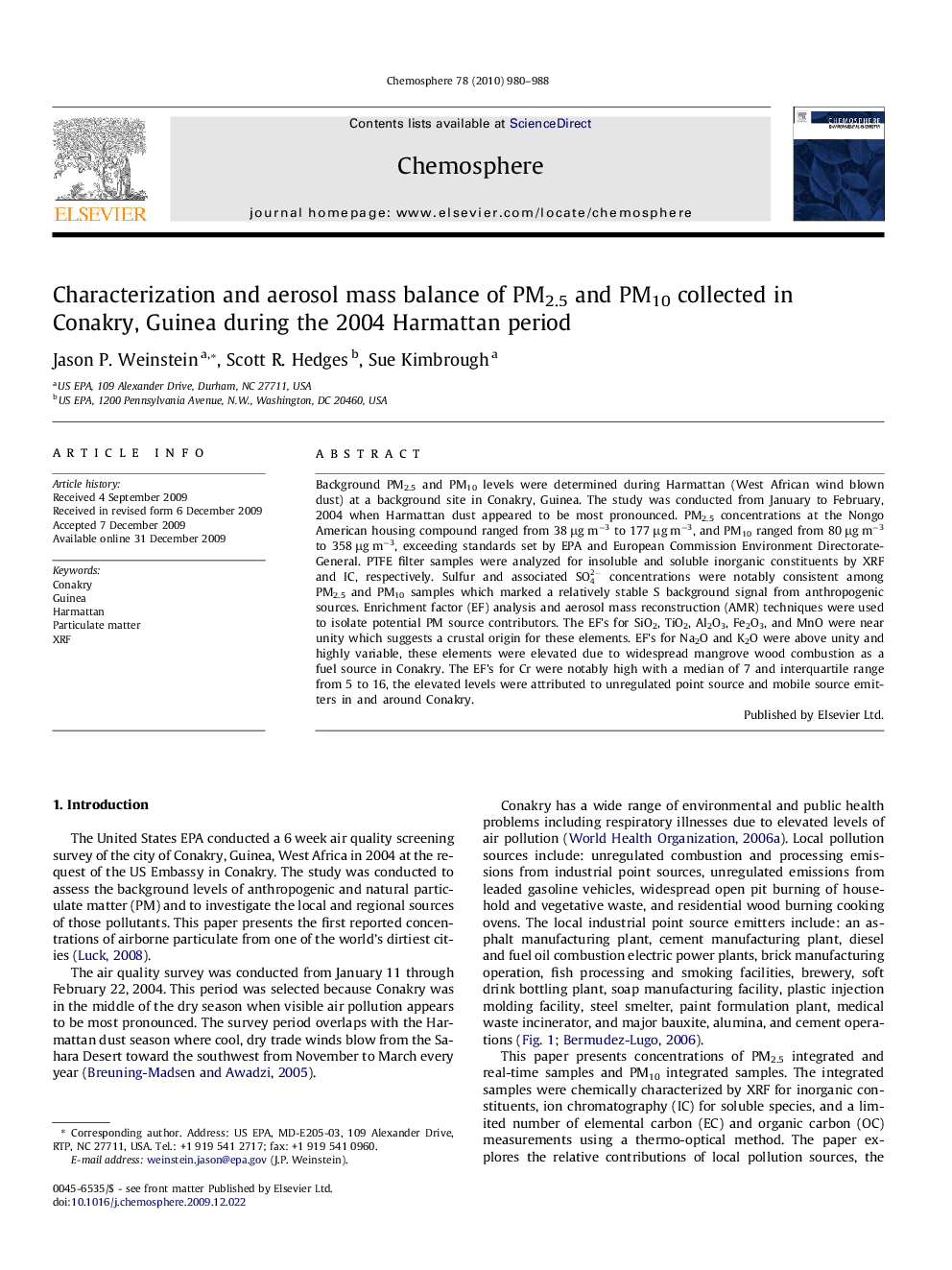| Article ID | Journal | Published Year | Pages | File Type |
|---|---|---|---|---|
| 4411961 | Chemosphere | 2010 | 9 Pages |
Background PM2.5 and PM10 levels were determined during Harmattan (West African wind blown dust) at a background site in Conakry, Guinea. The study was conducted from January to February, 2004 when Harmattan dust appeared to be most pronounced. PM2.5 concentrations at the Nongo American housing compound ranged from 38 μg m−3 to 177 μg m−3, and PM10 ranged from 80 μg m−3 to 358 μg m−3, exceeding standards set by EPA and European Commission Environment Directorate-General. PTFE filter samples were analyzed for insoluble and soluble inorganic constituents by XRF and IC, respectively. Sulfur and associated SO42- concentrations were notably consistent among PM2.5 and PM10 samples which marked a relatively stable S background signal from anthropogenic sources. Enrichment factor (EF) analysis and aerosol mass reconstruction (AMR) techniques were used to isolate potential PM source contributors. The EF’s for SiO2, TiO2, Al2O3, Fe2O3, and MnO were near unity which suggests a crustal origin for these elements. EF’s for Na2O and K2O were above unity and highly variable, these elements were elevated due to widespread mangrove wood combustion as a fuel source in Conakry. The EF’s for Cr were notably high with a median of 7 and interquartile range from 5 to 16, the elevated levels were attributed to unregulated point source and mobile source emitters in and around Conakry.
